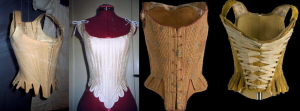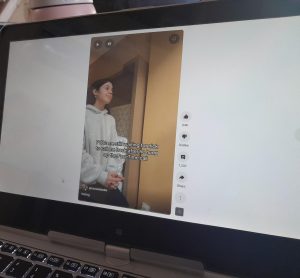Common Corset Confusion
February 12, 2021
Common Corset Confusion
By Ava B
It is often perceived that for centuries women were forced by society to wear deathtraps for the sake of an appealing figure. This simply isn’t true.
Historically, by definition, a corset is “a tightly fitting laced or stiffened outer bodice or dress”. Most popular sources will misinform on the purpose of corsets. They’ll feed into the popular belief that corsets were invented to shape a woman’s torso, and make her more attractive. Though this eventually became the reason for corsetry, this was not the original intention. Corsets were originally invented in the early to mid 1500s, as a way to support the back and torso, as posture was extremely important during this time. Men even wore corsets designed for their gender. Of course, women tend to have softer figures with curves, while men are wider and more box-like. This was taken into consideration, and thus, corsets were designed for both sexes. At the beginning, only those of higher standing wore corsets, as a form of decency, keeping the back straight. However, corsets quickly made their
way to the working class as they helped support the back and torso during working hours. Corsets were absolutely not uncomfortable, and were in fact designed to reinforce the torso to avoid strain or injury while doing things like lifting.
Eventually, around 1815, corsets became all about shape. They were almost completely reshape

d into the outline of an hourglass, to accentuate a woman’s figure. However, corsets were still comfortable. Women were never supposed to be uncomfortable in their corsets. If a woman had trouble breathing, was in pain or uncomfortable, her corset was most likely laced wrong. Corsets were not meant to be laced too tightly, and were only intended to slightly alter a woman’s shape. Women of all sizes wore corsets and never had a problem with discomfort or breathing. Of course, in the present day, if a woman were to suddenly lace up, there would be an adjustment, breathing in a corset is not as easy as it is without one. However, this doesn’t mean it hurts or is impossible. Corsets did eventually go completely out of style during the Roaring 20s, as flappers declared them oppressive and a way for men to rule over women. Of course, by this time, this rang true.
Recently, men and women all across the world have been reclaiming corsetry and a form of fashion and self expression, though this isn’t widely accepted yet, the outcome looks positive for those who enjoy wearing corsets.





